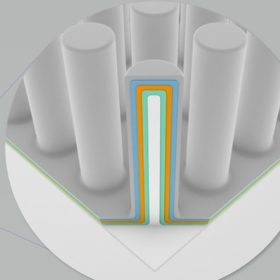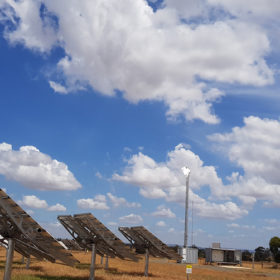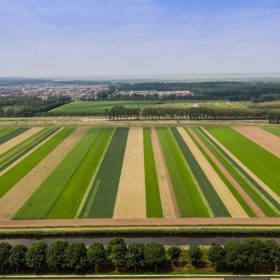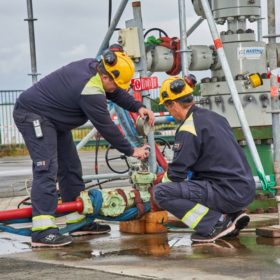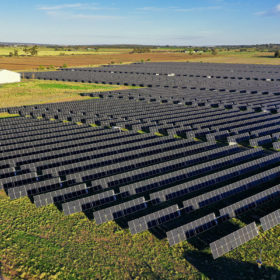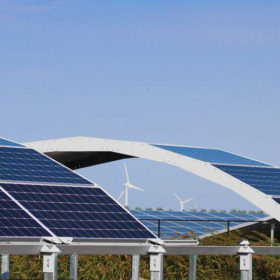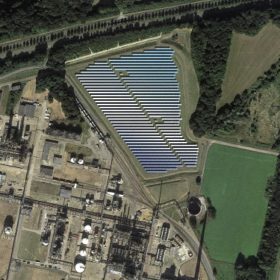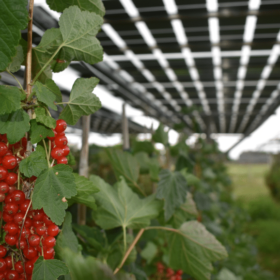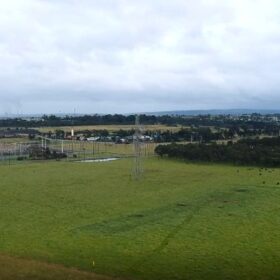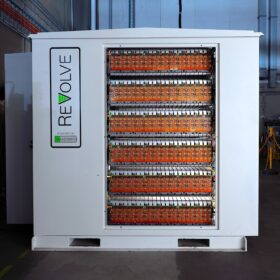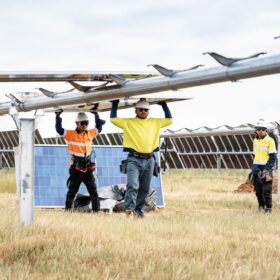3D solid-state thin film battery from the Netherlands
Developed by a spin-off of Dutch research institute TNO, the battery is claimed to offer higher energy density, longer lifespan and increased safety compared to conventional lithium-ion batteries. It will initially be applied in wearables and electric cars.
Photon plans world’s largest solar+storage project in South Australia
Dutch renewables company Photon Energy has announced it will build “the world’s largest” solar-plus-storage project to date, teaming with Australian technology provider and project developer RayGen Resources to develop a facility that will deliver 300 MW of solar generation and 3.6 GWh of energy storage.
Agrivoltaics for strip farming
Vattenfall is leading a Dutch consortium in a research project to assess whether agrivoltaics is also compatible with strip cropping. The company’s head of Solar Development NL, Annemarie Schouten, spoke with pv magazine about the first 0.7 MW pilot project under development in the northern Dutch province of Flevoland.
Dutch gas giant begins storing hydrogen in underground salt cavern
Operated by Gasunie, the underground storage facility is located near Veendam in the province of Groningen and should be fully operational in 2026. Tests will be run until spring 2022.
Australia grid delays affect Dutch developer’s figures
Photon Energy reported raised revenue from sales of electricity in the second quarter of the year, compared with 12 months earlier, but said grid hold-ups at 14.6 MW of solar projects Down Under had affected performance.
Arc-shaped PV system for agrivoltaics from Germany
The PV mounting system was developed by Germany-based Goldbeck and will initially be available in the Netherlands from 2022. The company will test the new technology in a 45 MW PV project.
Saturday read: Politicians tend to overpromise, except when it comes to solar
The speed of all transitions is inherently underestimated, and solar PV is no exception. The EU has grossly underestimated its coming of age, as its forecasts for 2020 were off by 67% for the Netherlands and 74% for Germany, writes Rolf Heynen, CEO of Dutch New Energy Research.
Debate on alleged forced labour in Chinese PV industry heats up in Europe
Three Dutch political parties have brought the forced labour issue to Parliament and have asked the Minister for Foreign Trade and Development Cooperation, Sigrid Kaad, to report on the matter.
Baywa’s ‘fruitvoltaic’ project to bear fruit – 23 tons a year, in fact
A 1.2 MWp installation featuring more than 4,500 solar panels has sheltered a berry crop from high temperatures and damp to strengthen the claims made by agrivoltaics companies that their systems can offer climate change mitigation as well as clean energy.
How to protect rooftop PV systems from fire risk
Dutch research institute TNO has released a series of guidelines to reduce fire hazards in rooftop PV installations. The study follows a series of fire accidents that occurred between 2018 and 2020 in the Netherlands, for which the main causes were identified.
